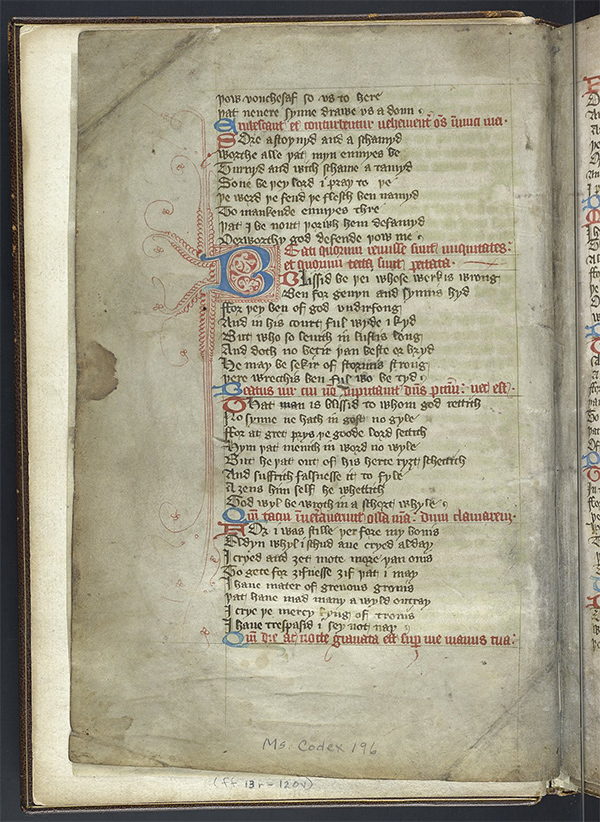
On October 26, Dot Porter (Curator, Digital Research Services, The Schoenberg Institute for Manuscript Studies at the University of Pennsylvania Libraries) showed us some of the technology available through the Vitale II Lab by applying it to MS Codex 196.
1. Could you tell us a little about the Vitale II Lab?
The lab (which we usually call Vitale II, to differentiate it from the Vitale Digital Media Lab in WIC) opened in 2013 as a general Digital Humanities lab, but since the Price Lab for Digital Humanities launched last year, and the library has a new unit for DH support, I wanted to give Vitale II new life as a focused lab for Book History & Digital Humanities (BH+DH). There’s always been work happening at the intersection of those two disciplines, but it wasn’t until this year, with the BH+DH conference at the University of Wisconsin in September, that I’d say BH+DH was really a “thing”. And what an exciting thing it is! So I’m building Vitale II as a space for experimental BH+DH work, and for education and discussion around those areas. Whitney Trettien coming in as a new faculty in English, coupled with incoming medieval graduate students who are really keen in this area, make it kind of the ideal time to make the lab happen. We have organized a series of BH+DH brownbag events, which include lectures and workshops about projects at Penn. Upcoming events are listed on our main page, and projects are listed on our Projects Page. If you have a project you’d like listed here or you’d like to present a brownbag, please contact me!
2. What were some of the imaging tools, tips, and techniques you showed us during our meeting?
During the meeting last week we used a combination of tech to give us a variety of views into the manuscript. I think we took a look at the high-res images a few times (they are online) but mostly we looked at the manuscript using the ceiling camera. The camera is a WolfVision EYE-12 camera. It displays on two 60-inch screens on the wall, so people in the room can get a good view wherever in the room they are sitting. There’s also a USB output from the camera, which means you can feed the view into a laptop and have a book-viewing video conference (we offer this as a service called Virtual Classroom Visits, but it could also be used for collaboration between Penn scholars and scholars in other places). We also used the microcamera a few times. This is like a combination between a microscope and a camera, and it’s useful for viewing things incredibly close– we used it a few times to look at one character at a time, where the strokes weren’t clear in the high-res images. I don’t think you’d want to use it all the time, but if you need a very close view it would definitely come in handy (it’s also helpful if you are interested in stratigraphy– the order of layering of ink on the page, for example in illuminated initials). We have a Plugable 250x Digital USB Microscope with Observation Stand. We also have a projector and a whiteboard. We didn’t really use it during our meeting, but if you wanted to you can project onto the whiteboard and then take notes over a projected page image– much better than writing on the page! We’re supposed to be upgrading to a whiteboard wall, but I don’t know when that’s happening.
3. What is your favorite detail about Ms. Codex 196?
There’s a lot I like about it, including the lovely blue and red penwork initials (I have a thing for penwork initials!) but probably my favorite is how it’s obviously been used. It contains a lot of marginal notes in later hands (16th & 17th century) which indicates that people weren’t only reading it then, they were actively engaging with it. It’s a reminder that books weren’t written and left on the shelf, they were read and used after, sometimes centuries after they were written. And I love that.
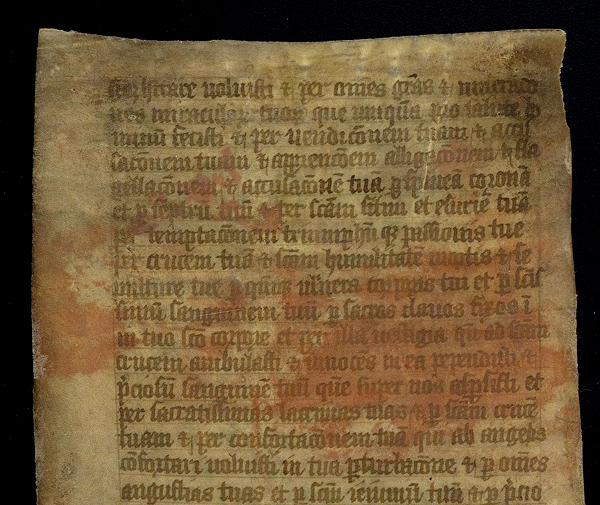
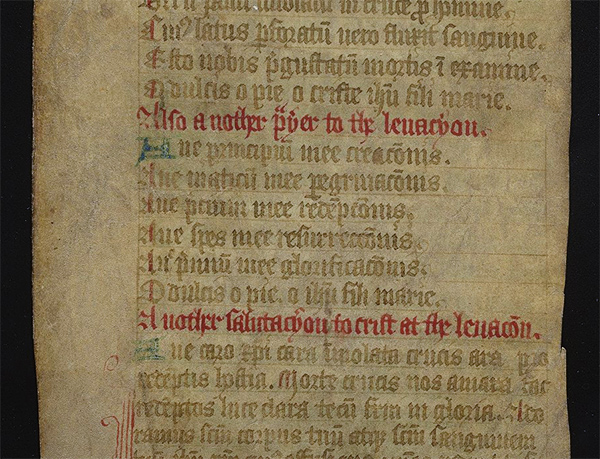


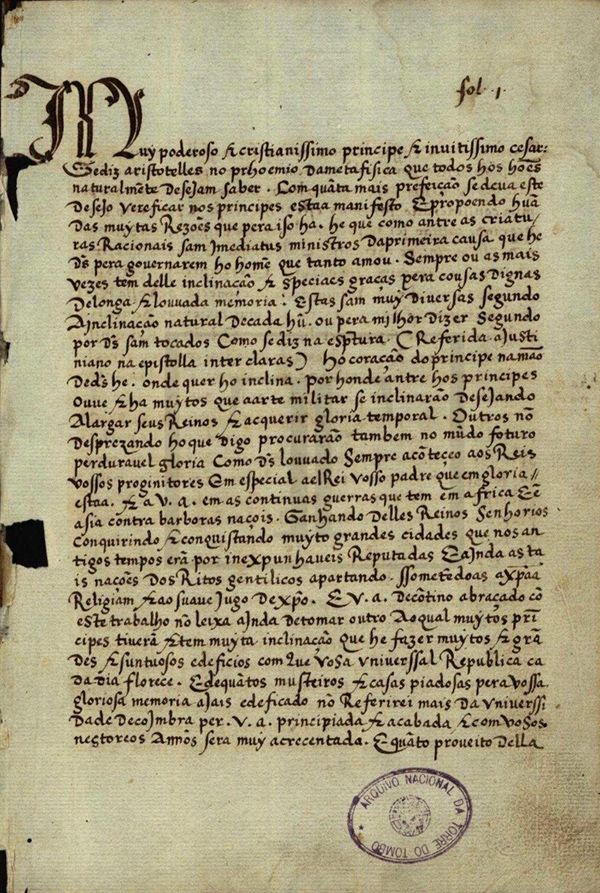
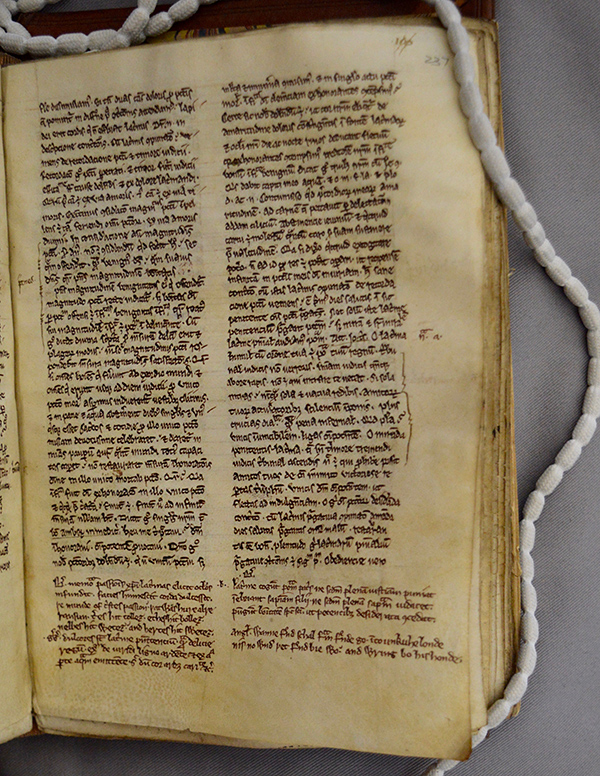
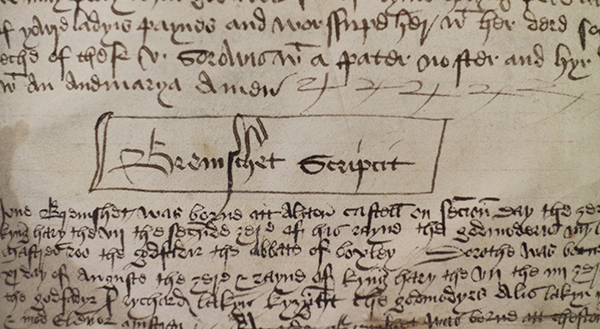


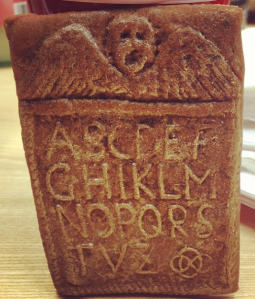
![Make we mery bothe more and lasse / For now ys t[h]e tyme of Crystymas](https://pennpaleography.files.wordpress.com/2014/12/crystymas.jpg?w=300&h=179)